The three types of links are:
- Internal links
- External links
- Backlinks
We will be looking at what each of these types of links is, what purposes they serve, and how to optimize your website using them.
But first, we need to understand what a link is, fundamentally.
Link building cheat sheet
What Is A Link?
A link (also known as a hyperlink) is a clickable word, phrase, or image on the internet that leads from one web page to another.
In general, there are three types of links:
- Internal links – hyperlinks that lead from one page to another within your own website;
- External links – hyperlinks that lead from your website to another resource;
- Backlinks – hyperlinks that lead from another site to yours.
All of these links are important for the SEO of your website.
Let’s delve a bit deeper into the specific functions of each one in order.
Internal Links
Internal links serve two purposes: one lies on the surface and the second one is not so obvious for anybody that has never been involved in SEO and content marketing.
The first one lies in the fact that by interlinking your content, you’re guiding users through it in a natural way, and prompting them to stay on your website for longer.
So, for example, you might finish up a guide on link building with a link to another guide that you have on email outreach, making for a natural transition.
The not-so-obvious reason why you should always interlink your content is that internal links contribute to your website’s crawlability.
Every once in a while, Google’s bots crawl through your website in a process called indexing. During this process, the bots add any new pages and posts that you might have published into Google’s index.
Pages that are in this index can be found and returned in search results. If your pages are not indexed, there is virtually no way for anybody to find them.
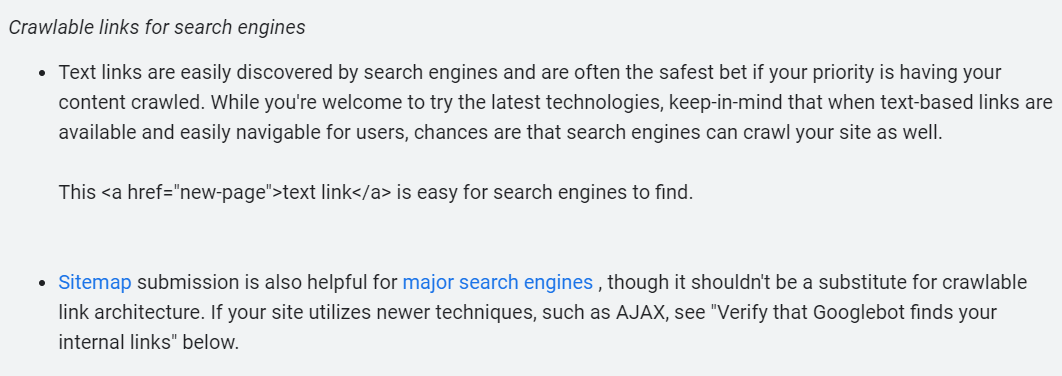
How To Optimize Your Web Page Structure For Search Engines
There are a few ways in which you can optimize your internal site architecture for crawlability.
The first one is, of course, to make sure every single one of your pages has a good amount of internal links pointing to it. There is no “golden rule”, and even Google themselves doesn’t define an optimal number – it just needs to be reasonable.
In our experience, we have found that five internal links pointing to every single one of your blog posts is generally enough.
There are also two types of links that you should avoid: homepage and other sitewide links. The reason behind this is simple: your homepage is accessible from any other page on your site anyways, and the link to your contact page should always be accessible from your footer as well, so any additional links to them are redundant.
Also, it’s generally a good idea to avoid linking to any pages that are already easily accessible from your navigation menu. Instead, focus on deep content links to ensure traffic flow and accessibility for crawler bots.
Make sure all of your internal links are “DoFollow”, and relevant for the reader. Also, use anchor texts that make sense. Notice how we linked to our blog post on the difference between a NoFollow link and a DoFollow link?
This is just one example of using a relevant anchor text for an internal link.
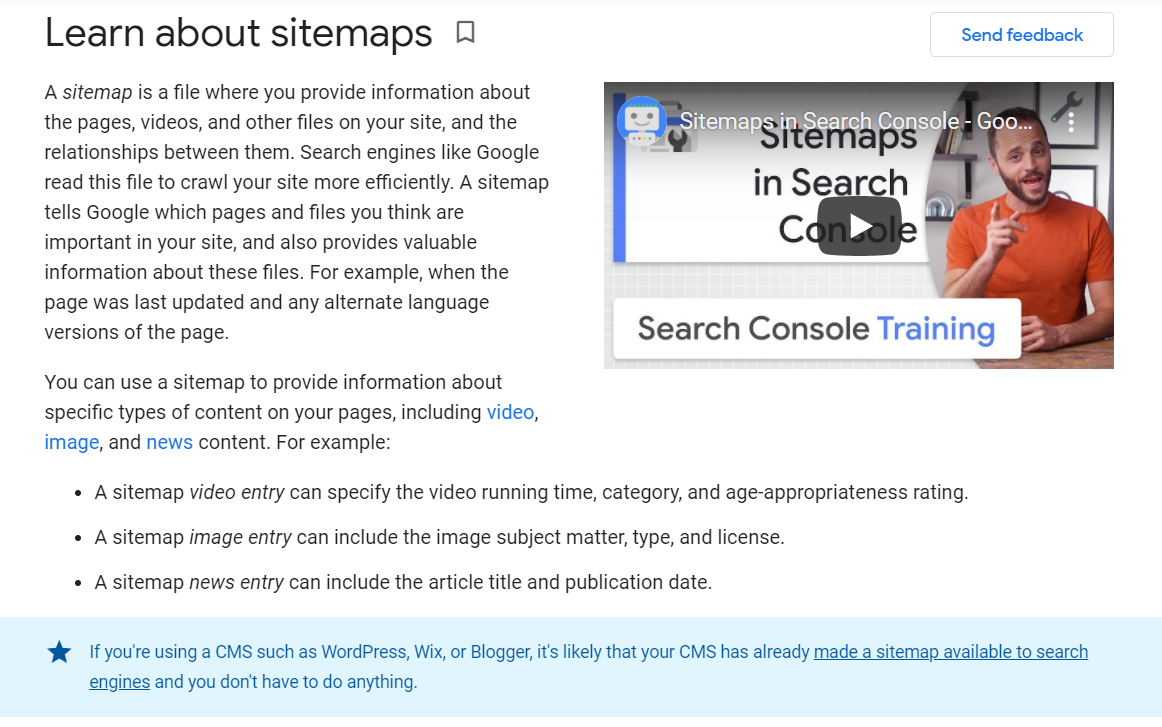
Another way to ensure Google’s crawlers can access your pages is by uploading a sitemap.
A sitemap is an outline of sorts that tells search engines exactly what your site structure is. There are many different sitemap generators available that can help you build one.
Once your sitemap is ready, upload it to Google Search Console.
One more thing you can do is manually submit your pages to GSC once they’re published.
But, even if you use a sitemap and manually index each page, that doesn’t mean you should ignore your internal link structure.
You still need to interlink your pages for an improved user experience. You also need to run regular link audits and fix any broken link as soon as you spot it as these are
External Links
Many bloggers are against using external links in their content and you can definitely understand where they’re coming from. You don’t really want to drive traffic away from your website, do you? Especially considering that the whole point of running a website is to generate traffic, not give it away.
However, as is often the case in the world of search engine optimization, things are not quite so black and white.
In general, linking to high-authority resources is considered to be a good SEO practice. It is definitely a good idea to link to recent studies and guides by other people in your niche.
But you need to keep in mind which websites you’re linking to, and the number of backlinks that you’re giving away.
Can External Links Harm Your Search Engine Rankings?
Yes, they can.
And again, there are two ways in which they can do it: the first one is obvious, and the second one – not so much.
Of course, you don’t want to be linking out to shady resources – everybody knows that. But even if you’re only linking to high-quality resources, having too many external links can really slow down the growth of your website.
You won’t necessarily get a penalty for linking out to other people too much, but it’s important to understand how exactly links work.
They pass on ranking signals, more specifically, link equity from one site to another. This is also often referred to as “link juice” by the SEO community.
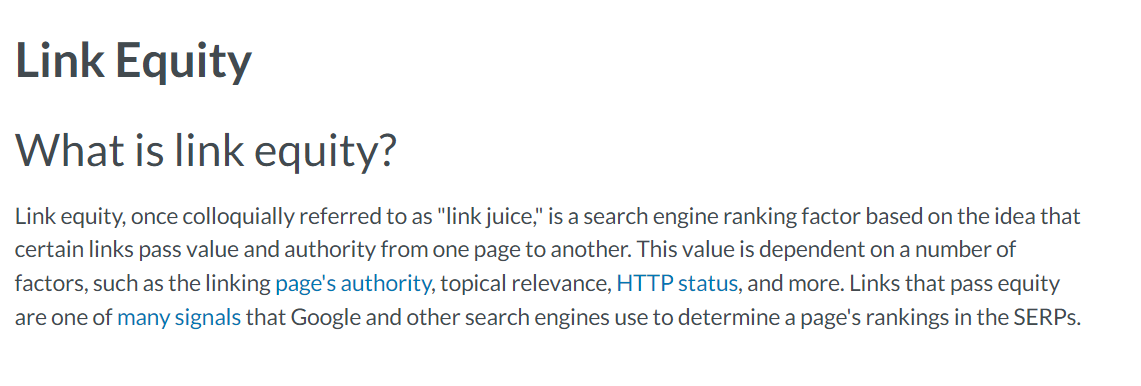
Piyush Shah, the Head of SEO over at Dukaan has a very good analogy that explains exactly why it’s called link juice:
“Imagine your website as a bucket. Every inbound link that you get adds a drop of link juice to your bucket. Every external link that you give out to someone else pokes a little hole in that bucket, causing a little bit of that link juice to flow out.”
This is especially noticeable if you rely on link building as one of your main SEO strategies. Having too many external links leading from your website can really throw off your link-building efforts because any PageRank that you’re earning will be instantly given away to other websites.
This is why it’s important to set a policy when it comes to outbound links: for example, don’t have any more than 10 such links going out from any given page of yours.
Paid links are a huge taboo, and you should avoid them at all costs.
You can measure the impact of your link activities with tools like Ahrefs and Google Analytics. If you notice that your traffic has been stagnating or even dropping, it’s time to clean up some external links on your website.
Backlinks
Backlinks arguably have the greatest impact on a website’s SEO. The more incoming links you have pointing to your website from other resources, the better it is for you.
There are many different types of backlinks. The best ones are editorial links from other people’s blog posts, but even blog comments or social media posts can be considered a backlink, just of a very low quality.
I have already explained how backlinks pass on PageRank from page to page. But how exactly do you benefit from having a lot of backlinks?
Links are a huge ranking factor. The more links you have pointing to your site, the more traffic flow you will get from them.
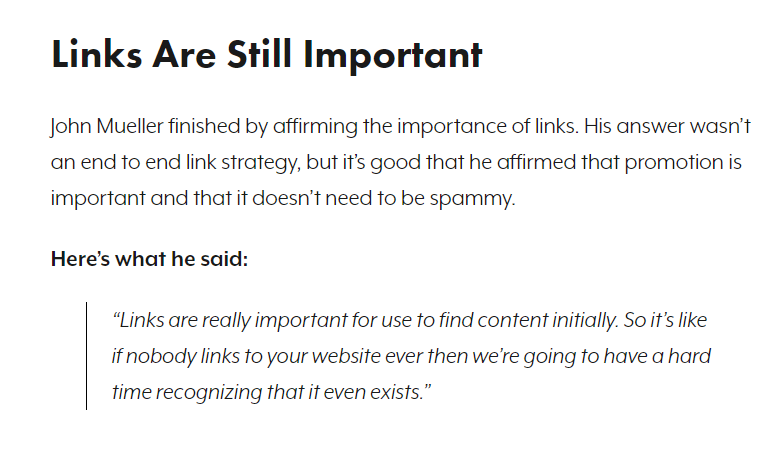
Google’s algorithm also takes your backlink profile into consideration when ranking your pages in search results. To search engines, backlinks serve as “votes” of sorts.
Having more good links than other sites tells Google and other search engines that your blog has in-depth, high-quality content. The more links from highly-authoritative websites you have, the more likely you are to rank high.
Additionally, if you have a more robust backlink profile than other businesses, they will struggle to outrank you until they build a comparable number of backlinks to their own site.
What Makes A Good Backlink?
Not all backlinks will bring you the same amount of link value. Links from spam resources can even hurt your technical SEO instead of helping it.
So, what makes a good backlink?
There is no one definitive answer to this question, as what makes a good backlink will vary depending on the website and its audience. However, some factors that could make good inbound links include:
- The website’s authority and relevance to the topic of the link;
- The quality of the content on the website;
- The trustworthiness and reputation of the website;
- The number and quality of other backlinks to the website;
- The age of the website;
- The location of the website (e.g. whether it is based in a high-traffic country like the United States);
- The link location on the web pages;
- The relevance of the used anchor tag (irrelevant anchors create unnatural links).
According to Google’s John Mueller, the best type of backlink is a recommendation by somebody who thinks that your content is great.

So how do you acquire these links? According to the Google Webmaster Guidelines, any types of link exchanges or paid backlinks are considered to be a“link scheme”.
But they’re also saying that it’s perfectly fine to reach out to bloggers and let them know that you’ve recently published a piece of content:
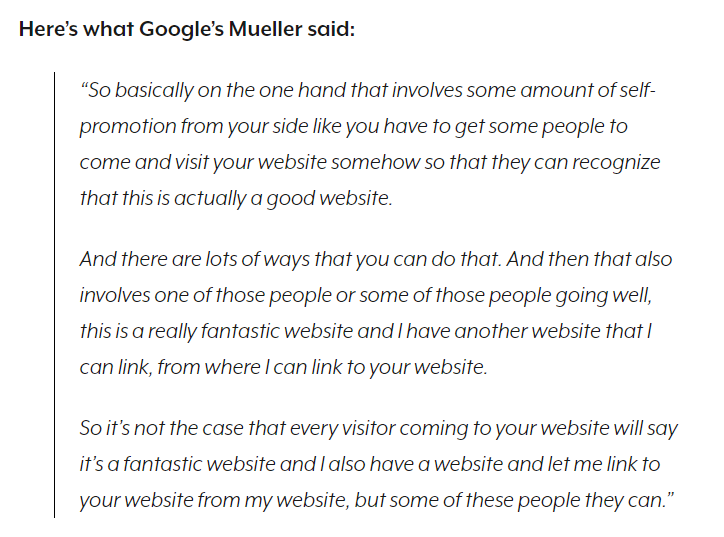
Here are the types of links with low SEO value:
- User generated links;
- Directory links (this includes local directories as well as industry directories);
- Links from niche forums;
- Multiple links coming from the same domain;
- NoFollow links;
- Other types links like links in video descriptions on YouTube, or other social media websites.
Even though they pass on little SEP value, it’s still good to have these.
Again, the best backlinks are editorial links acquired through manual outreach.
This leads us to the next section of the article: the best ways to acquire high-quality links.
How To Acquire High-Quality Backlinks With Respona
There are many different ways to get backlinks. Here, we will share our top three favorite strategies for doing it, all of which we use in-house.
Combined, they have been consistently yielding us 10-20 high-quality (DR 50+) backlinks every single week for a little bit over a year now with only a single SEO expert doing it.
The Anchor Text Strategy
If you’re new to building backlinks, the anchor text strategy would be a good one to start. It’s very straightforward, and the conversion rate is usually pretty good, provided your pitch is decent.
The process for this strategy is as follows:
- Pick an article that you’re going to be building links to;
- Find other articles that mention your target keyword but aren’t directly competing content;
- Reach out to the site owner or content manager, letting them know that you have an article that could help expand the topic of their own.
There are two ways you can find opportunities for an anchor text link-building campaign.
The first one involves manually searching for them in the search engine of your choice. This is very tedious and time-consuming.
The second one is directly through Respona. It has a built-in search engine that pulls results directly from Google.
Here’s what it looks like:
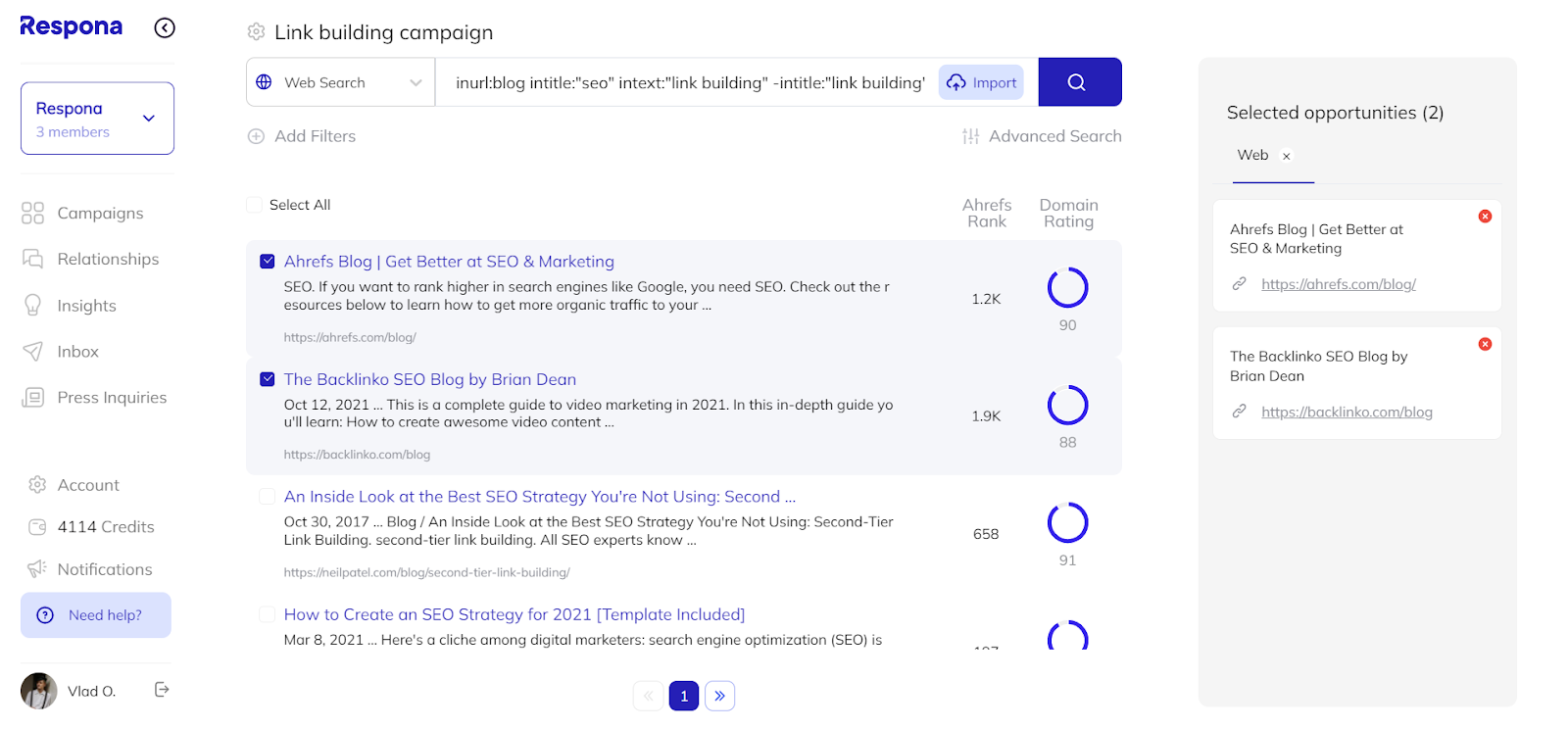
It has four search modes:
- Google Search
- Bing Search
- Podcasts
- Bing News
For link building, either the “Blogs” or “Web search” modes work perfectly.
If you look at the screenshot, you will notice that I used some special search operators in my query. Since the search engine is based on Google, the advanced search operators that it supports are all the same.
These can help narrow down your search and find more relevant link-building prospects much quicker. Some of the most useful search operators for this are:
- “Inurl:” – specifies which words need to be mentioned in the target URLs (for example, “inurl:blog” only returns pages that are part of a blog).
- “Intitle:” – specifies which words and phrases need to be mentioned in the titles of the target articles.
- “intext:” – specifies which keywords and phrases need to be mentioned in the bodies of the articles.
- “-’ – the minus sign “reverses” how a search operator works. For example “-intitle” tells the search engine NOT to return articles that contain a certain keyword in the titles.
Here’s what my search string looks like:
inurl:blog intitle:”seo” intext:”link building” -intitle:”link building”
This tells Respona to only return pages that are part of a blog, are about SEO and mention link building somewhere in the text, but not the title. The results would be prime opportunities to build links for any of our link building guides
The average reply rate for link-building emails is only about 10%, so the bigger your campaigns are, the more backlinks you will be able to build.
Once you’re done prospecting, you will need to prepare your email sequence, wait until Respona finds the contacts’ emails, and then reach out to them.
Here’s a template you can grab and use for your own anchor text campaigns:
Subject: Some love for @organization's article
Hey, @first_name
Happy @day_of_week!
Just finished reading through your post on @url_title. It was such a good read, I had to share some thoughts.
First of all, great job!
Secondly, you had mentioned skyscraper (10x) content in the article but didn’t go too much into further detail.
We actually just released a guide that would provide a little something extra for the readers who wanted to learn more about the skyscraper technique.
Care to take a look? It’s right here: https://respona.com/blog/skyscraper-technique/
As a huge “thank you”, I’d be happy to provide a social share, indirect link, access to our tool – whatever your heart desires :)
Regardless, I’ll definitely be a frequent reader, and keep up the stellar content!
Thanks,
[signature]
Competitor Backlinks
This is our personal favorite link-building strategy.
In essence, you will be looking for articles that are linking to your competitors’ content, but not yours. We operate in a pretty saturated niche, so it isn’t difficult to find a few hundred link-building prospects in just a few minutes.
Author’s note: you will need backlink monitoring software to do this. We use Ahrefs.
The process for this strategy is as follows:
- Choose an article that you will be building links to.
- Search for competing content.
- Look at the backlink profiles of competing articles.
- Export the list of their backlinks.
- Reach out to the websites linking to your competitors and ask to link to you instead.

This is the first article that shows up for the keyword “link building”. As you can see, it has over three thousand referring domains!

If you apply the “one link per domain”, “dofollow type of links”, “blogs”, and “English language” filters, that number drops to a significantly lower 1,284 backlinks, which is still extremely impressive.
The next step would be to export these links into an Excel spreadsheet. Once you have that spreadsheet, you will need to clean it up, removing any irrelevant opportunities or ones that have a Domain Rating that’s too low.
We like to remove any opportunities below DR 40.
Cleaning up the sheet will again reduce the number of prospects, but in the end, you will have a list that is much higher quality.
After that, you can simply import it into Respona by clicking on the “Import .CSV” button.
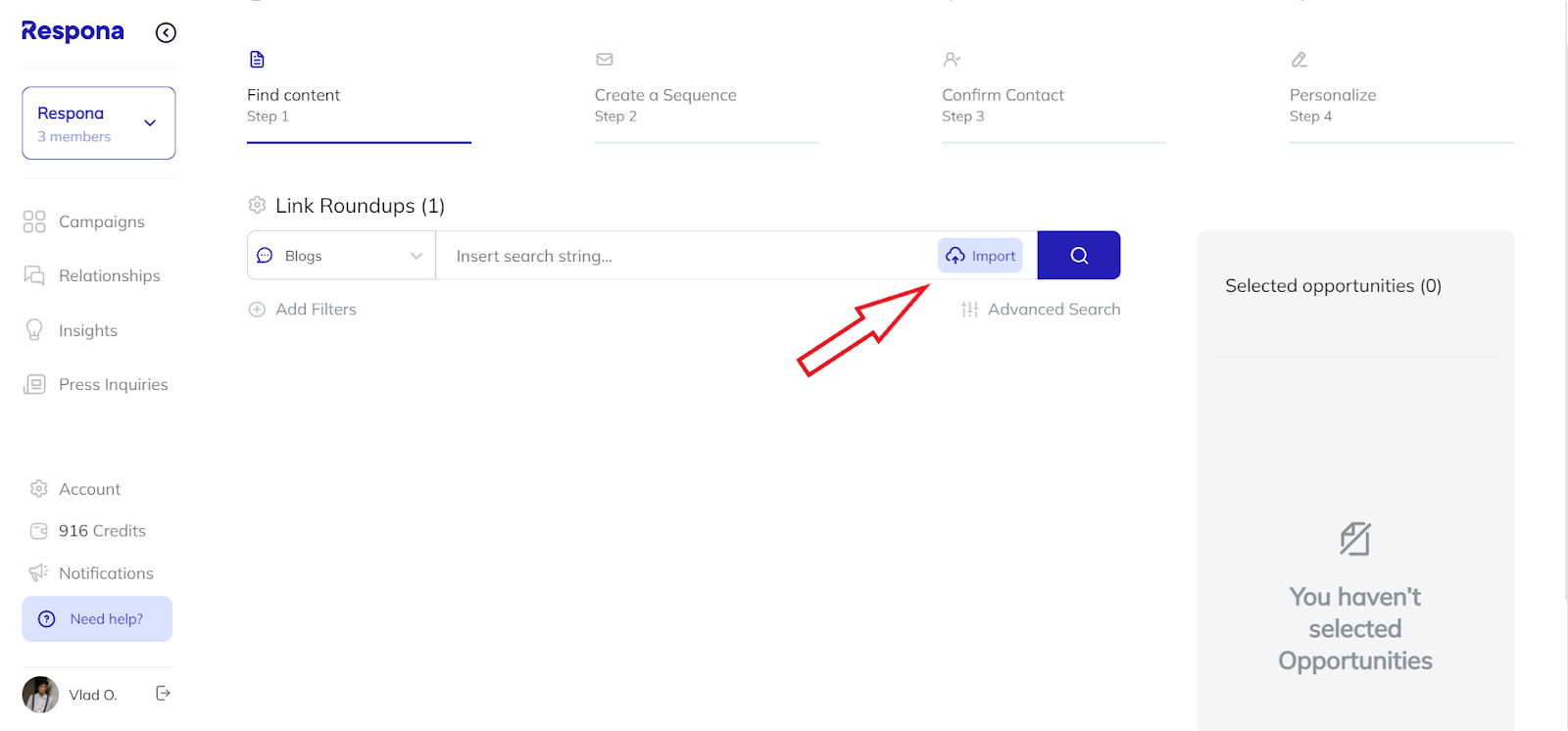
You will also need to assign the corresponding .CSV fields to the appropriate variables within Respona.
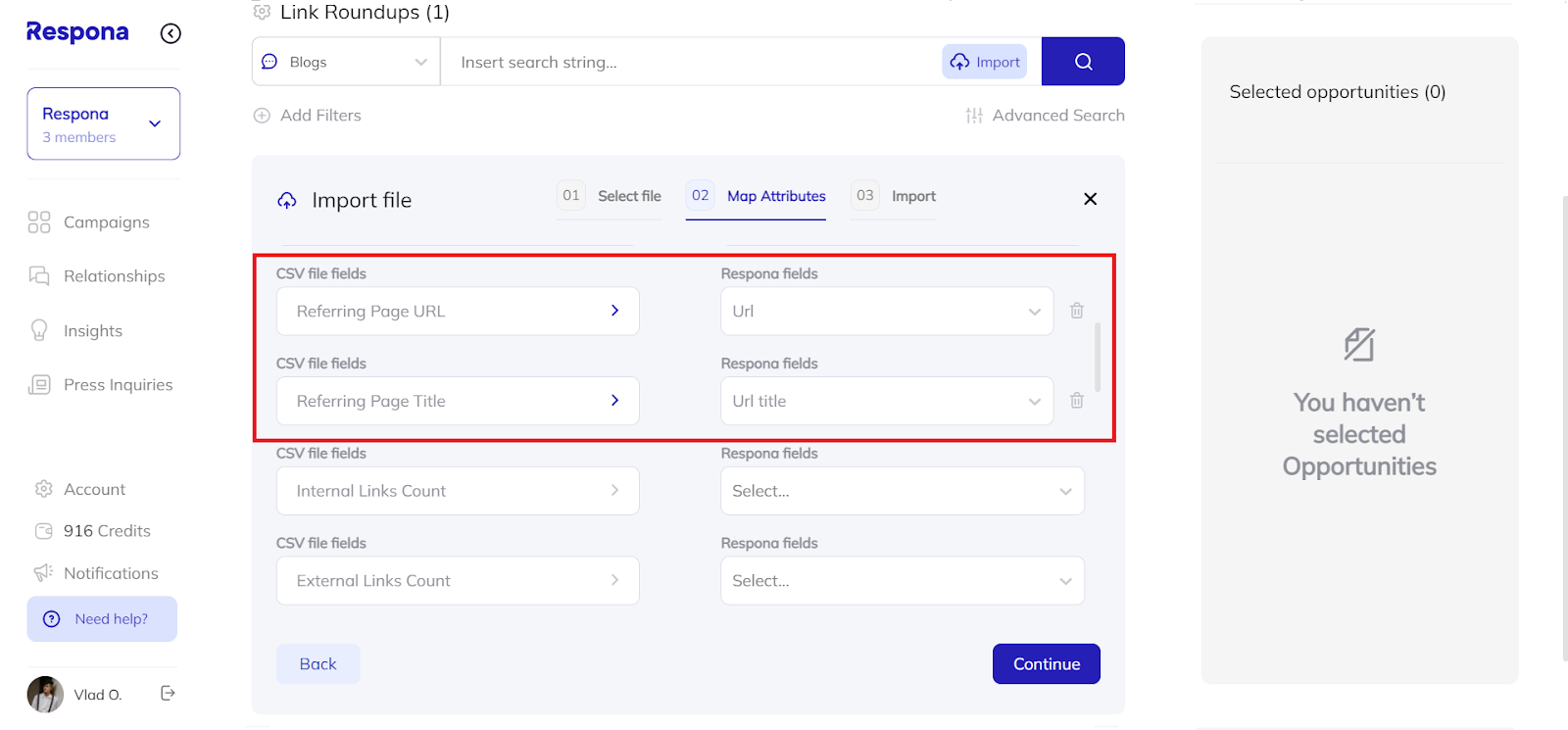
A pitch template that we have found works pretty well for this type of campaign is as follows:
Subject: Can I include @organization in my guest post?
Hi, @first_name!
I`m Vlad, the outreach manager from Respona. How is your @day_of_week going?
I’m currently writing a guest post for Bulk.ly (DR 69) on video marketing tips and looking to include a link to one of your articles.
I’m wondering whether you have a relevant post you recommend? Happy to share the draft if you’d like to take a look at the content.
In return, I was thinking maybe you could mention our own article on email copywriting? You’re linking to Grammarly from one of your pieces and I think it’d complement the content nicely.
Looking forward to hearing from you,
[signature]
It works great because the most important part of any link-building email – which is the value proposition – is right at the start of it. It only works if you’re writing guest posts for other websites, of course, but if you’re focusing on link building as part of your SEO strategy, chances are you are doing that already.
Most outreach emails ask for something first and then offer something else in return, so this is a nice change of pace.
Guest Posting
The grandfather of all link-building strategies, guest posting is probably the most widely-used tactic to acquire high-quality backlinks.
There are three ways in which you can secure guest posting opportunities.
- Look for websites that have a “write for us” page;
- Choose websites that you like and pitch their content managers directly (since most websites accept guest posts even if they don’t have a “write for us” page);
- Don’t do any separate outreach for guest posts at all.
What? How would you secure guest blogging opportunities without any outreach?
Let me explain. If you’re already doing link-building outreach for other strategies, there’s simply no need.
After every successful link that you earn through other strategies, you can pitch a guest post – chances are they will accept it if your offer is valuable.
To do that, you will need to do some research on the content your target already has on their blog.
You can take advantage of Ahrefs’ “Content Gap” feature to check the keywords which their competitors are ranking for, but they aren’t.
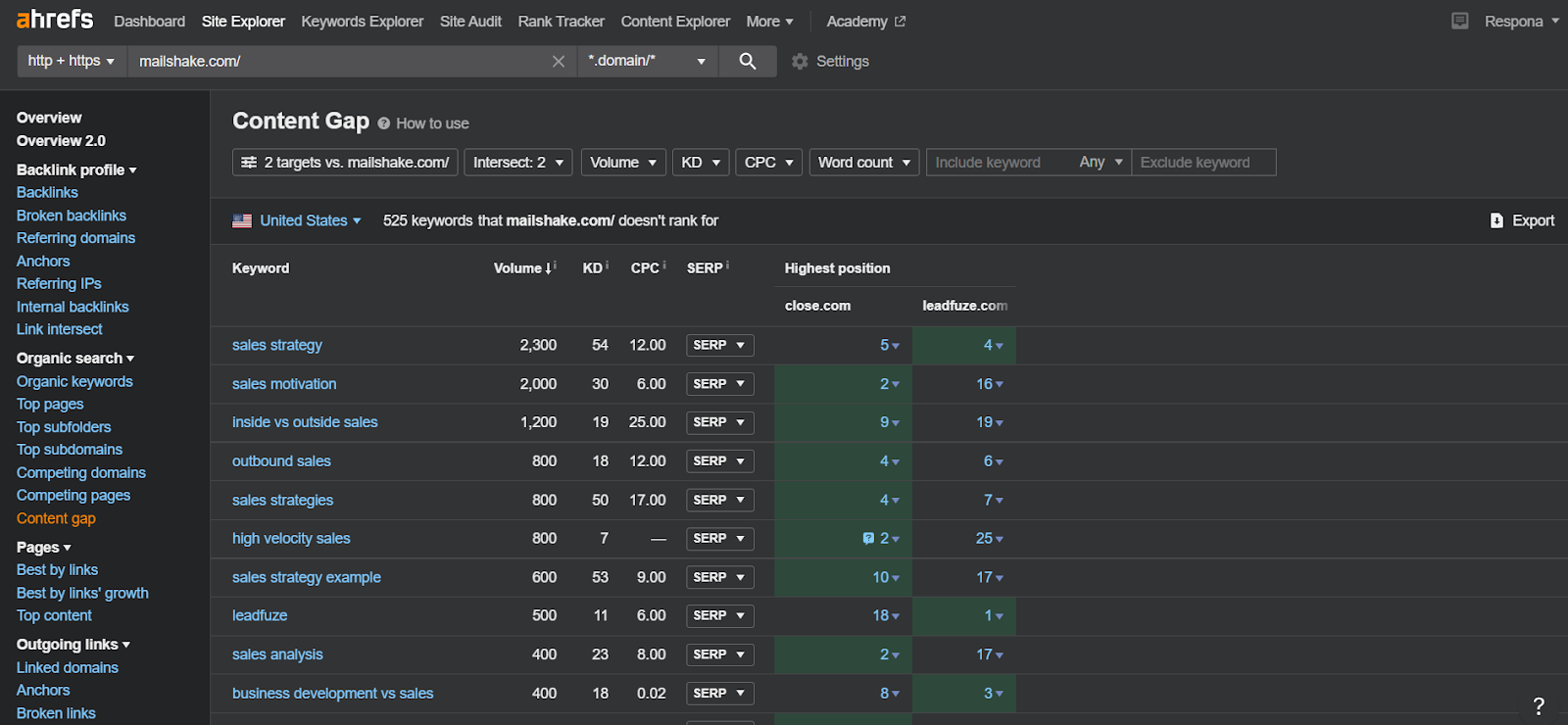
Here’s an example of such a pitch that landed us a guest post:
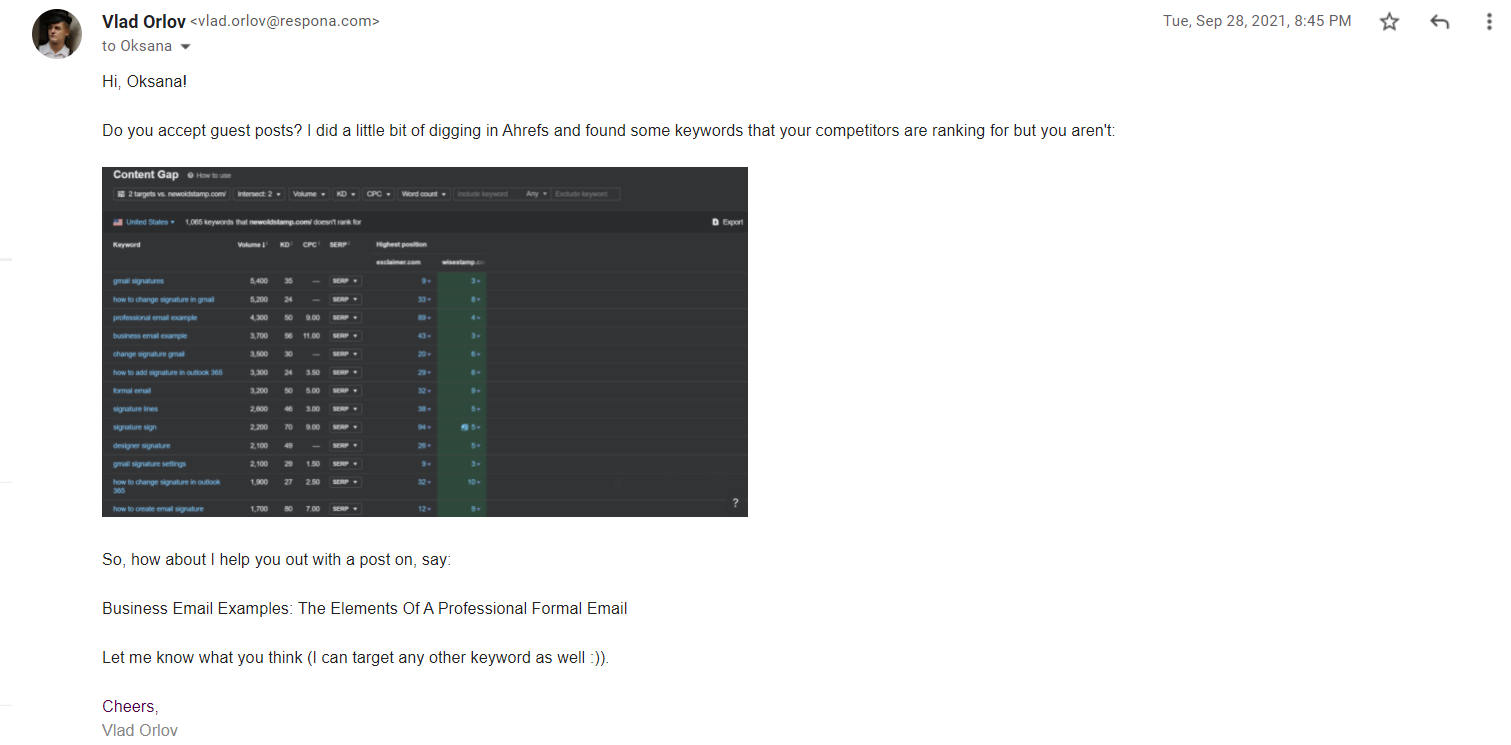
To get more backlinks out of your guest post, you can include some links to your partners – they will return the favor for you by linking to you from their blogs or their own guest posts that they’re writing for other sites.
Link building cheat sheet
Over To You
A healthy link profile of any website involves solid internal linking, a number of external links leading to other sites, and, of course, a lot of backlinks coming from highly-authoritative resources.
Initially built as an email solution specialized in acquiring manual outreach links, Respona can help you automate the most tedious processes associated with it, and greatly boost the efficiency of your link-building efforts.





![2455 Guest Posting Sites for 2024 [Updated List]](https://respona.com/wp-content/uploads/guest-posting-sites-1024x683.jpg)

